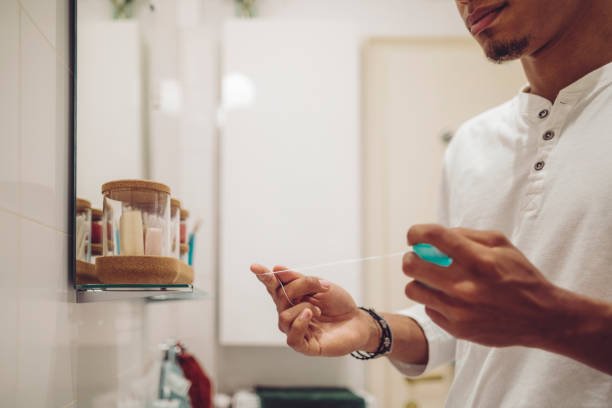Flossing is so important for preventive dentistry -plaque is removed, teeth are less likely to decay, and gum disease is reduced. Read our article on why flossing is important here.
The truth is most people do not know how to floss properly.
How to properly floss
Make sure you have enough floss
Most people will take only a few inches at best of floss when flossing their teeth. When using string floss, you actually need cut a string that is at least 18 inches long. You might be thinking 18 inches… isn’t that a lot of floss? You actually need this amount to floss correctly between each tooth.
It's also crucial to maintain proper form. At first, I didn’t know what proper flossing form was. I just took a little bit of floss, wrapped it around my index fingers, and started pressing down. But you actually need to thread the floss around both middle fingers to fasten it. This way you keep the floss in place, and then you pinch it with your thumbs.
The proper flossing form
Okay, now that you have the proper amount of floss and the correct form, it is now time to actually floss!
What you’re going to do is place the dental floss in the space between two teeth. Using the floss, you are going to make a C-shape around one of the teeth. Slide the floss up and down and back and forth. Then repeat the process with the other tooth.
Use a new section of floss when it's time to move on to the following two teeth. Bacteria can build up between the teeth if you do not use a new section of your 18inch floss. Cavities can be caused by this bacteria accumulating between the teeth, which is why you’re flossing in the first place. So make sure you are continuously using a new section of your floss strand.
Now after you floss make sure you rinse out your mouth! You don’t want all of those particles and bacteria that we took out in between your teeth too float around your mouth. Make sure you use mouthwash or water to rinse.
Between dental exams, preventive dentistry measures such as daily flossing can help keep your teeth healthy. Floss at least once a day and use suitable procedures. You will lower your risk of cavities and gum disease while also having a better smile.





